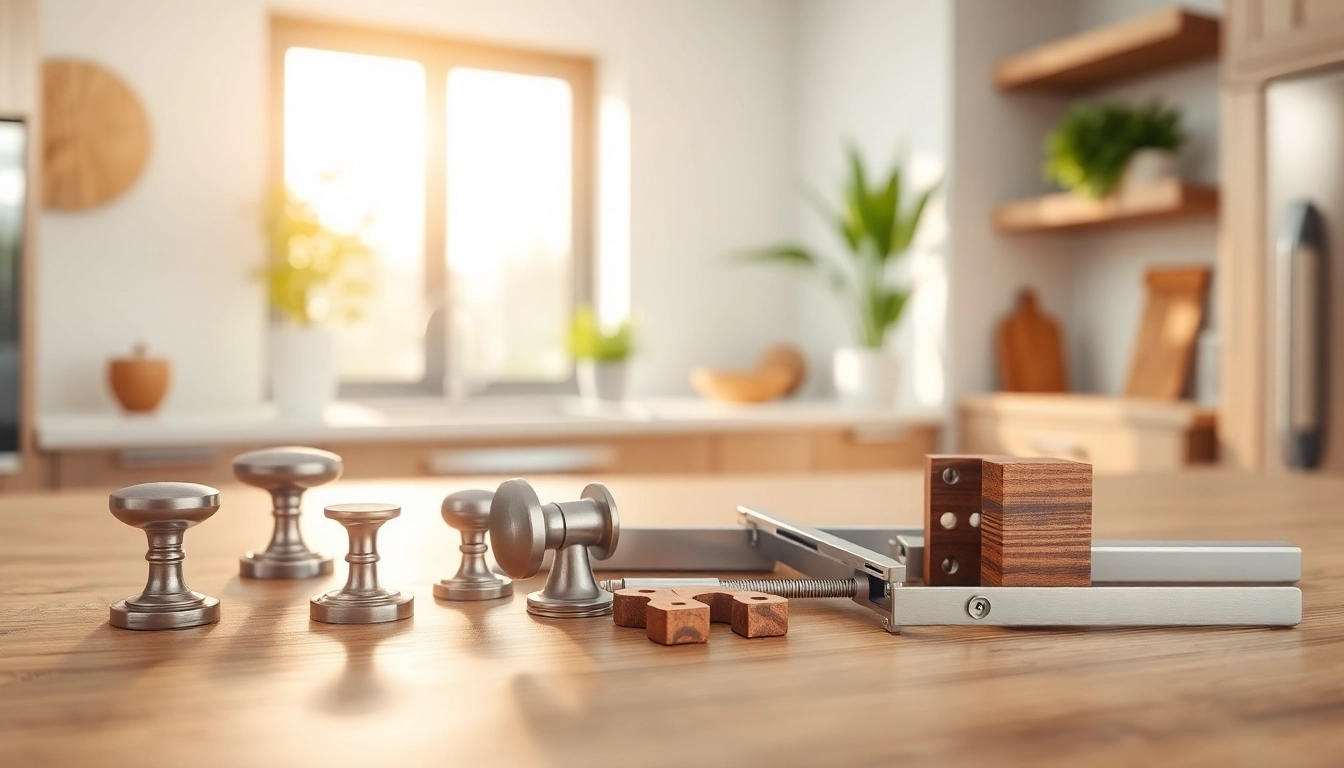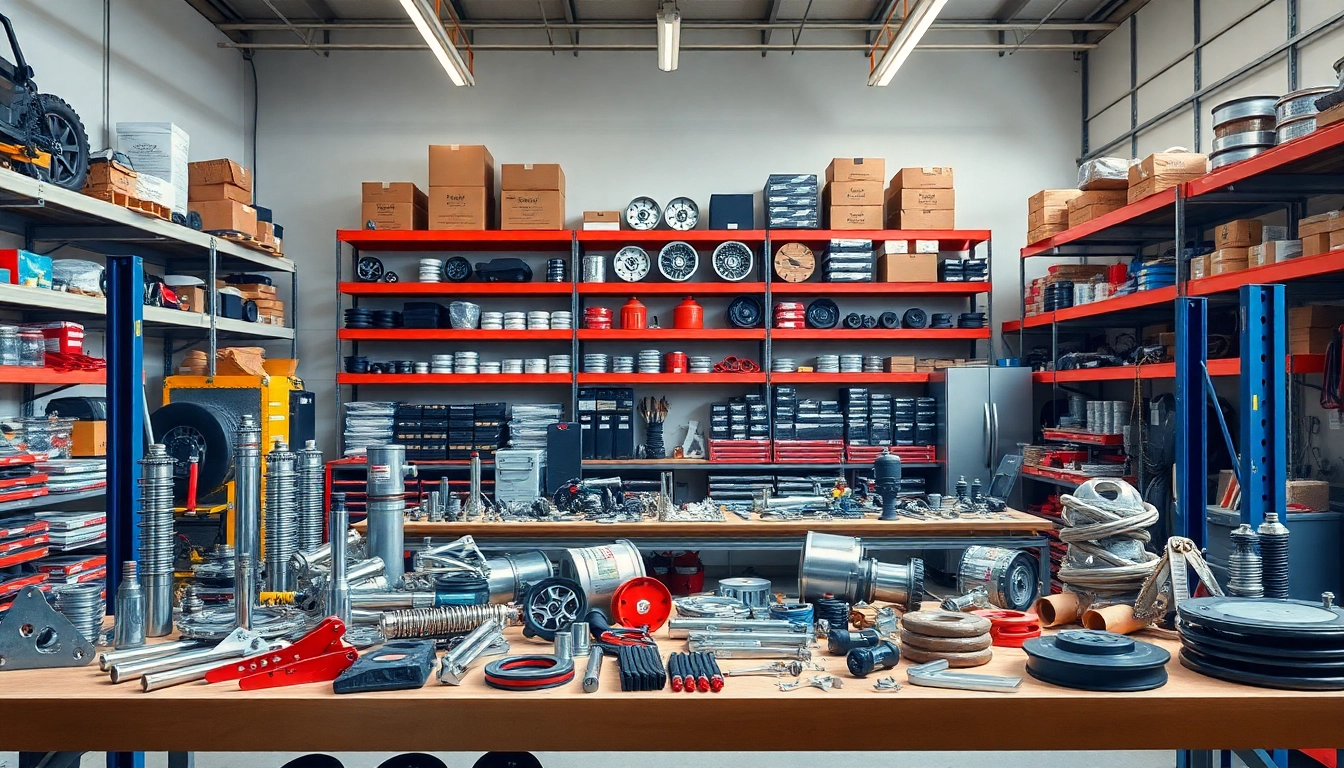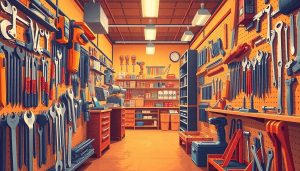Quality and Innovation: Leading Furniture Hardware Manufacturers You Need to Know
Understanding Furniture Hardware Manufacturers
In the world of furniture and cabinetry, the role of furniture hardware manufacturers is crucial. They are the unsung heroes behind the functionality and aesthetics of our homes and workplaces. Furniture hardware encompasses a wide range of components used in the construction and enhancement of furniture, from drawer slides and hinges to knobs and pulls. Understanding the intricacies of this industry not only aids designers and builders but also informs consumers about the best choices available in the market.
Definition and Types of Furniture Hardware
Furniture hardware refers to the various components and fixtures used to construct and enhance furniture pieces. These can be categorized into several types, each serving specific functions:
- Drawer Slides: Mechanisms that facilitate the opening and closing of drawers smoothly.
- Hinges: Hardware that connects two objects, allowing for movement, often used in doors and lids.
- Knobs and Pulls: Decorative elements that enhance functionality and aesthetic appeal, used in cabinets and drawers.
- Locks and Latches: Security features integrated into furniture to safeguard contents.
- Feet and Legs: Structural hardware supporting furniture items, affecting both stability and style.
The Importance of Quality Manufacturing
The quality of furniture hardware is paramount for both function and safety. Inferior quality hardware can lead to breakdowns, resulting in a poor user experience and potentially hazardous situations. Hence, manufacturers that focus on high-grade materials, precise craftsmanship, and rigorous testing protocols ensure their products meet industry standards. A reputable manufacturer will also offer warranties as a sign of confidence in their products.
Common Materials Used in Furniture Hardware
The materials used in manufacturing furniture hardware greatly impact durability, appearance, and cost-effectiveness. Common materials include:
- Stainless Steel: Known for its corrosion resistance and strength, it is commonly used in high-quality drawer slides and hinges.
- Brass: Valued for its aesthetic appeal, brass is often used for knobs and decorative pieces.
- Zinc Alloy: A cost-effective option that is used in a variety of hardware applications.
- Plastic: Utilized for lighter components, plastic is generally less durable but can be practical for certain applications.
Industry Leaders in Furniture Hardware Manufacturing
Amidst a plethora of manufacturers, a select few stand out as leaders in the furniture hardware industry. Their commitment to innovation, quality, and customer satisfaction sets them apart.
Top Brands and Their Unique Offerings
Establishing a strong brand presence signifies excellence in a competitive market. Let’s explore some of the industry’s prominent players:
- Top Knobs: A leading manufacturer known for its extensive line of high-quality cabinet hardware, offering a variety of styles that cater to diverse design aesthetics.
- Rockler: Offers a comprehensive range of hardware solutions, including innovative drawer slides, which are practical for a variety of project needs.
- Furnica: Specializes in a wide array of furniture accessories from hinges to locks and slides, catering primarily to the North American market.
- Richelieu Hardware: Recognized for its avant-garde designs and specialty hardware products that meet the demands of modern cabinetry.
- Häfele: A global market leader in furniture fittings that provide integrated solutions for furniture and living spaces.
Comparative Analysis of Price and Quality
When selecting furniture hardware, it is crucial to balance cost with quality. A lower price may be enticing but often comes at the expense of durability. Brands like Top Knobs and Häfele offer premium quality at a higher price point, appealing to consumers who prioritize long-lasting products. Meanwhile, brands like Rockler provide reasonably priced options without significantly compromising quality, making them a favorite among DIY enthusiasts.
Customer Reviews and Market Reputation
Customer feedback is a reliable indicator of a manufacturer’s success and product reliability. Websites and platforms where customers leave reviews for furniture hardware show a trend towards brands that listen to their consumers and exhibit responsiveness to feedback. For instance, Top Knobs and Rockler consistently receive high ratings for quality and customer service, while brands with frequent complaints regarding their product durability may struggle to maintain market presence.
Choosing the Right Hardware for Your Projects
Selecting the right furniture hardware can significantly impact the project outcome, whether you are a contractor, designer, or DIY homeowner. Understanding the essential factors in hardware selection is key to achieving the desired results.
Factors to Consider When Selecting Hardware
When choosing hardware, consider the following factors:
- Functionality: Assess the intended use of the hardware. For high-traffic areas, durability and ease of operation should take precedence.
- Style: Aesthetic compatibility with furniture style is vital. Matching hardware to design themes enhances visual appeal.
- Compatibility: Ensure that selected hardware fits well with your furniture dimensions and construction methods.
- Weight Capacity: Always check the weight limits to ensure that hardware can support the intended load without failure.
Best Practices for Sourcing Furniture Hardware
Sourcing furniture hardware effectively is critical for maintaining quality throughout your project. Here are best practices to follow:
- Research Suppliers: Invest time in finding reliable suppliers with good reputations. Look for detailed product specifications and customer feedback.
- Request Samples: If possible, request samples of hardware before committing to a bulk purchase, allowing you to evaluate texture and functionality firsthand.
- Bulk Buying: Consider bulk buying for larger projects to cut costs, but ensure to verify the quality regardless of the quantity.
- Think Ahead: Always factor in future repairs or replacements by purchasing additional units when sourcing hardware.
Case Studies of Successful Hardware Implementations
Understanding real-world applications of furniture hardware helps in appreciating its utility. Here are a few interesting case studies:
Case Study 1: Modern Kitchen Renovation
In a recent residential renovation, a homeowner opted for soft-close hinges and dovetail drawer slides from Rockler. The added functionality and seamless design significantly enhanced the kitchen’s usability while maintaining modern aesthetics. Customer feedback highlighted the improved user experience due to noise reduction and smoother operation.
Case Study 2: Commercial Office Build-Out
For a new commercial space, a design firm selected high-quality Baldwin hardware for their cabinetry due to its reputation for durability in high-traffic areas. This choice resulted in a significant reduction in maintenance costs while providing elegance that matched the office’s upscale atmosphere.
Emerging Trends in Furniture Hardware Design
The furniture hardware landscape is continuously evolving. Staying abreast of these trends is essential for manufacturers, suppliers, and consumers alike.
Innovative Designs and Functional Solutions
In the realm of innovative designs, furniture hardware manufacturers are increasingly focusing on user-centric solutions. This trend includes:
- Modular Hardware: Allows for customization in furniture arrangements, providing versatility in design.
- Smart Hardware: Integration of technology into hardware, enabling features such as remote locking mechanisms and sensor-activated lighting systems.
- Ergonomic Designs: Focus on user comfort and ease of use, with hardware that is not only functional but appealing to all ages.
Sustainability and Eco-Friendly Materials
With climate change and sustainability at the forefront, more manufacturers are adopting eco-friendly practices. Sustainable materials like bamboo or recycled metals are becoming more common. Brands that embrace sustainability not only appeal to environmentally conscious consumers but also contribute to reducing the ecological footprint of the furniture production sector. This trend is likely to shape the future of furniture hardware manufacturing significantly.
The Impact of Technology on Hardware Manufacturing
Advancements in technology are revolutionizing how furniture hardware is designed and produced. Three-dimensional printing has allowed for rapid prototyping, enabling manufacturers to experiment and innovate more freely. Furthermore, CAD (Computer-Aided Design) software streamlines the design process, resulting in higher precision and efficiency in production.
Future Prospects for Furniture Hardware Manufacturers
The future for furniture hardware manufacturers is dynamic and filled with both opportunities and challenges. As market demands evolve, manufacturers must adapt and innovate continuously.
Market Growth and Challenges
The furniture hardware industry is projected to experience significant growth owing to increasing demand in residential and commercial sectors. However, manufacturers face challenges such as global supply chain disruptions and increasing material costs that can impact profitability. To navigate these challenges successfully, companies must maintain flexibility and invest in efficient production practices.
How Manufacturers Can Adapt to Changing Consumer Demands
Staying relevant requires understanding consumer trends and preferences. Manufacturers should engage in market research regularly to align their offerings with customer desires. Implementing feedback loops can enhance product development processes, ensuring that consumers’ voices are heard in product innovation.
Strategic Partnerships and Collaboration Opportunities
Forming strategic partnerships with design firms and contractors can provide invaluable insights into the latest trends and customer preferences. Collaborations can also lead to innovative product solutions, catering to niche markets that value unique styles or organizational features. Coupling this with a strong online presence can significantly boost market reach and visibility among potential clients.














Post Comment